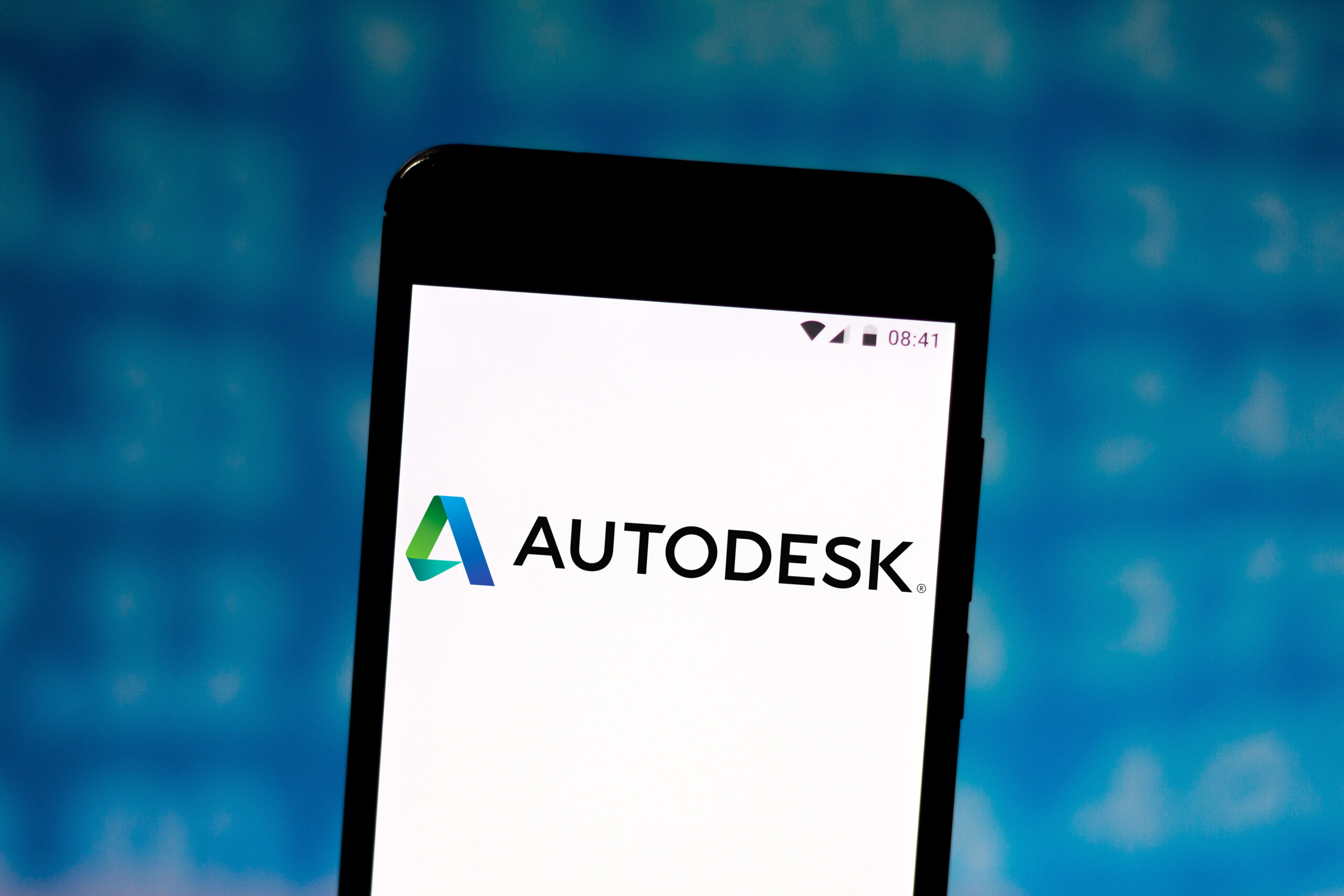Autodesk’s journey stands out as a beacon of innovation in the era of digital transformation. By harnessing the power of cloud computing and artificial intelligence, Autodesk has revolutionized its IT infrastructure, setting a new standard for customer experience in the software industry. This strategic shift demonstrates how cutting-edge technologies can be seamlessly integrated to not only streamline operations but also to deliver unparalleled personalization and efficiency to end-users. In this article, we’ll explore how Autodesk’s bold move to embrace cloud and AI-driven solutions has redefined customer interactions, offering valuable insights for businesses looking to elevate their own digital presence and customer satisfaction levels.
Autodesk Envisioning a Modern Digital Experience

Embracing Autodesk and its Cloud-Powered Innovation
Autodesk’s vision for a modern digital experience centers on leveraging the power of cloud technology to revolutionize customer interactions. By migrating their infrastructure to the cloud, Autodesk aims to create a more agile and responsive ecosystem that can adapt quickly to changing customer needs. This shift enables the company to deliver seamless, on-demand access to its suite of design and engineering tools, ensuring that customers can work efficiently from anywhere, at any time.
AI-Driven Personalization
At the heart of Autodesk’s digital transformation is the integration of artificial intelligence to enhance customer experiences. By harnessing AI algorithms, Autodesk can analyze vast amounts of user data to provide personalized recommendations, streamline workflows, and anticipate customer needs. This proactive approach not only improves user satisfaction but also empowers customers to maximize their productivity and creativity within Autodesk’s ecosystem.
Continuous Improvement through Data Insights
Autodesk’s modern digital experience is built on a foundation of continuous improvement. By leveraging cloud-based analytics and AI-driven insights, the company can rapidly iterate on its products and services. This data-driven approach allows Autodesk to identify pain points, optimize user interfaces, and develop new features that align closely with customer expectations, fostering a more intuitive and efficient design environment for professionals across industries.
Migrating to the Cloud for Scalability and Agility for Autodesk
Autodesk’s journey to the cloud represents a pivotal shift in their IT infrastructure, enabling unprecedented scalability and agility. This migration has been instrumental in enhancing the company’s ability to meet fluctuating customer demands and streamline operations.
Autodesk Embracing Cloud-Native Solutions
By adopting cloud-native solutions, Autodesk has significantly improved its capacity to scale resources up or down based on real-time needs. This flexibility allows the company to efficiently manage peak usage periods without overprovisioning, resulting in cost savings and improved performance. Cloud-native architectures also facilitate rapid deployment of new features and updates, keeping Autodesk at the forefront of innovation in the design software industry.
Leveraging Microservices Architecture
The transition to a microservices-based architecture has been a game-changer for Autodesk’s development processes. This approach enables teams to work independently on different components of the software, accelerating development cycles and reducing time-to-market for new products and features. Moreover, microservices enhance system resilience, as issues in one service don’t necessarily impact the entire application.
Enhancing Data Management and Analytics
Cloud migration has revolutionized Autodesk’s data management capabilities. With cloud-based data lakes and analytics platforms, the company can now process and analyze vast amounts of customer data in real-time. This capability powers personalized user experiences and data-driven decision-making, ultimately leading to more satisfied customers and improved business outcomes.
Autodesk Leveraging Big Data and AI for Personalization
In today’s digital landscape, Autodesk is harnessing the power of big data and artificial intelligence to revolutionize customer experiences. By analyzing vast amounts of user data, the company can now offer tailored solutions that address individual needs with unprecedented accuracy.
Intelligent Customer Profiling with Autodesk AI Algorithm
Autodesk’s AI algorithms sift through customer interactions, usage patterns, and preferences to create detailed user profiles. This deep understanding allows for highly personalized product recommendations and support, ensuring that each customer receives relevant assistance at every touchpoint.
Predictive Analytics for Proactive Support
By leveraging machine learning models, Autodesk can now anticipate potential issues before they arise. This predictive capability enables the company to offer proactive support, reaching out to customers with solutions even before they encounter problems. Such foresight not only enhances user satisfaction but also significantly reduces downtime for Autodesk’s professional clientele.
Dynamic Content Customization
AI-driven systems continuously adapt Autodesk’s digital platforms, tailoring content, interfaces, and features to individual user behaviors. This dynamic approach ensures that each customer’s journey is uniquely optimized, leading to improved engagement and productivity.
By embracing these advanced technologies, Autodesk is setting new standards in customer experience, demonstrating the transformative potential of AI and big data in modern business operations.
The Impact on Customer Experience and Satisfaction Using Autodesk
Autodesk’s cloud and AI-driven transformation has significantly enhanced customer experience and satisfaction. By leveraging cutting-edge technologies, the company has revolutionized how it interacts with and serves its clientele.
Autodesk with Personalized Interactions
Cloud-based solutions enable Autodesk to offer tailored experiences to each user. AI algorithms analyze customer data, preferences, and behavior patterns to provide personalized product recommendations and support. This level of customization ensures that customers feel valued and understood, fostering stronger relationships with the brand.
Improved Response Times
The implementation of AI-powered chatbots and virtual assistants has dramatically reduced response times for customer inquiries. These intelligent systems can handle routine questions instantly, freeing up human agents to focus on more complex issues. As a result, customers experience faster problem resolution and reduced frustration.
Proactive Support
Autodesk’s AI systems can now anticipate potential issues before they arise. By analyzing usage patterns and system data, the company can proactively reach out to customers with solutions or updates, preventing problems and enhancing overall satisfaction. This forward-thinking approach demonstrates Autodesk’s commitment to customer success.
Enhanced Product Development
Cloud-based feedback systems and AI-driven analytics allow Autodesk to gather and interpret customer insights more effectively. This data-driven approach informs product development, ensuring that new features and improvements align closely with user needs and preferences. Consequently, customers benefit from products that evolve to meet their changing requirements.
Key Takeaways from Autodesk’s Cloud and AI Transformation
Enhanced Customer Experience
Autodesk’s transformation has led to a significant improvement in customer experience. By leveraging cloud and AI technologies, the company has been able to offer more personalized services, faster response times, and intuitive interfaces. This shift has resulted in higher customer satisfaction rates and increased loyalty among users of Autodesk’s software solutions.
Streamlined Operations
The adoption of cloud infrastructure has allowed Autodesk to streamline its internal operations. This has led to increased efficiency, reduced costs, and improved scalability. The company can now rapidly deploy updates and new features, ensuring that customers always have access to the latest tools and capabilities.
Data-Driven Decision Making
AI-powered analytics have enabled Autodesk to make more informed decisions based on real-time data. This has not only improved product development but also helped in predicting customer needs and market trends. As a result, Autodesk can proactively address issues and create innovative solutions that align with customer demands.
Collaborative Innovation
The cloud-based platform has fostered a more collaborative environment, both internally and with customers. This has accelerated innovation cycles and allowed for rapid prototyping and testing of new ideas. By involving customers in the development process, Autodesk has ensured that its products remain relevant and valuable in a rapidly evolving market.
In Conclusion
As you’ve seen, Autodesk’s bold embrace of cloud and AI technologies has revolutionized its customer experience. By leveraging these cutting-edge tools, the company has created a more responsive, personalized, and efficient service model. This transformation serves as a compelling case study for other enterprises looking to modernize their IT infrastructure and enhance customer satisfaction. As AI and cloud technologies continue to evolve, you can expect even more innovative solutions from industry leaders like Autodesk. By staying attuned to these advancements, your organization can also harness the power of cloud and AI to drive meaningful improvements in customer experience and maintain a competitive edge in today’s rapidly changing digital landscape.
More Stories
KT Cloud Accelerates Digital Growth with New High-Tech Data Center in Yecheon-Gun
KT Cloud new data center in Yecheon-gun marks a key public-private effort with Gyeongsangbuk-do and Yecheon County.
Microsoft Cloud Momentum Fuels AI Growth Across Indonesia and Malaysia
Microsoft Cloud services expands strategically into Indonesia and Malaysia to reshape Southeast Asia’s technological landscape.
Roblox Farming Craze Fuels Surging App Store Economy
As you dive into the dynamic world of digital economies, one phenomenon stands out: the Roblox farming craze. This surge,...
DeepSeek R1-0528 Powers Open-Source AI Challenge to OpenAI and Google
In the fast-changing world of artificial intelligence, DeepSeek's new model, DeepSeek-R1-0528, stands out as a strong competitor. It challenges major...
NVIDIA Powers Up: Revolutionizing AI Data Centers with 800V HVDC Systems
NVIDIA emerges as a pioneer, revolutionizing the backbone of AI data centers through its cutting-edge 800V high-voltage direct current (HVDC) systems.
Bluesky Reinvents the Blue Check: A Decentralized Take on Digital Trust
In an era where digital trust is critical yet fragile, Bluesky offers a bold new approach to online verification. Bluesky...


